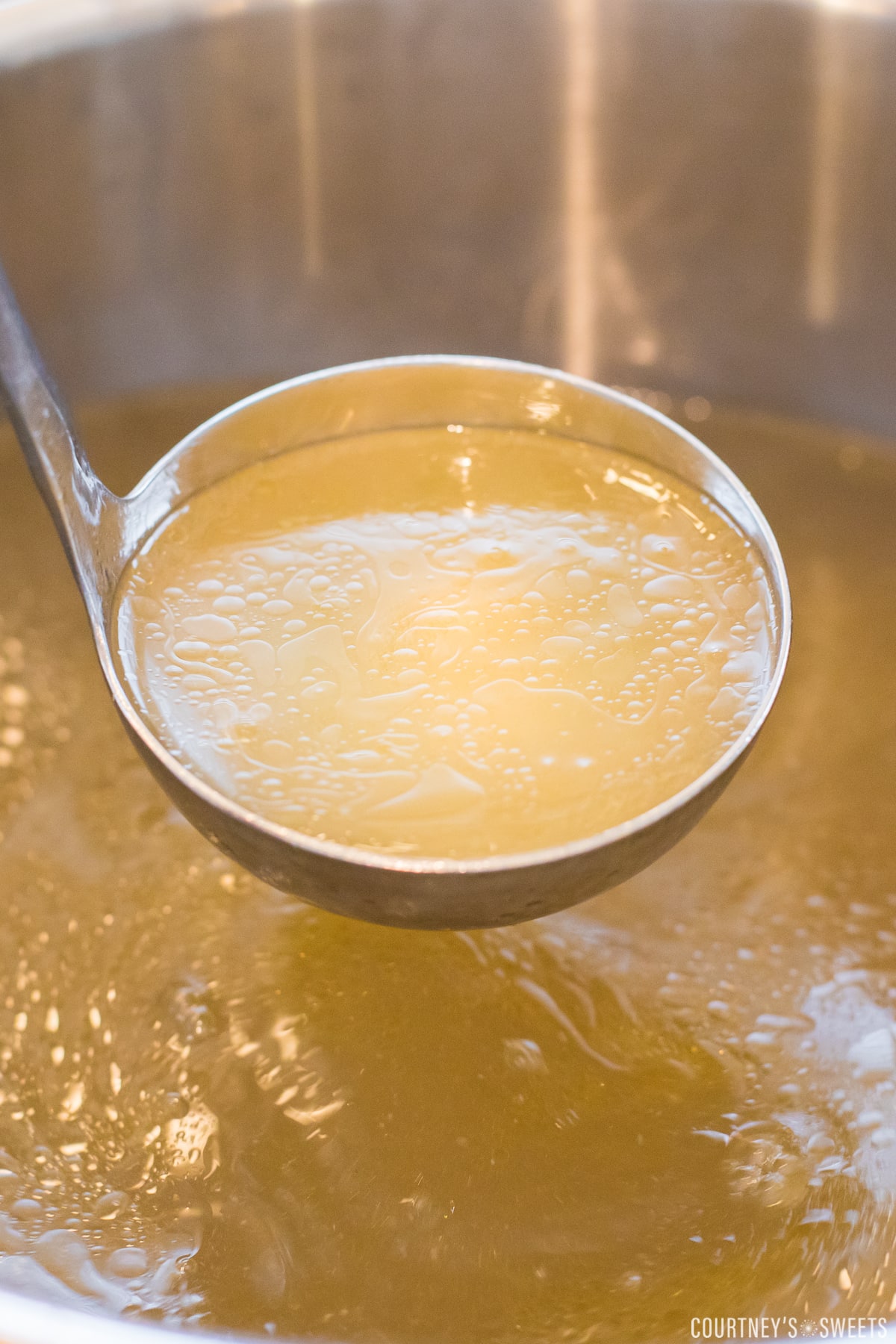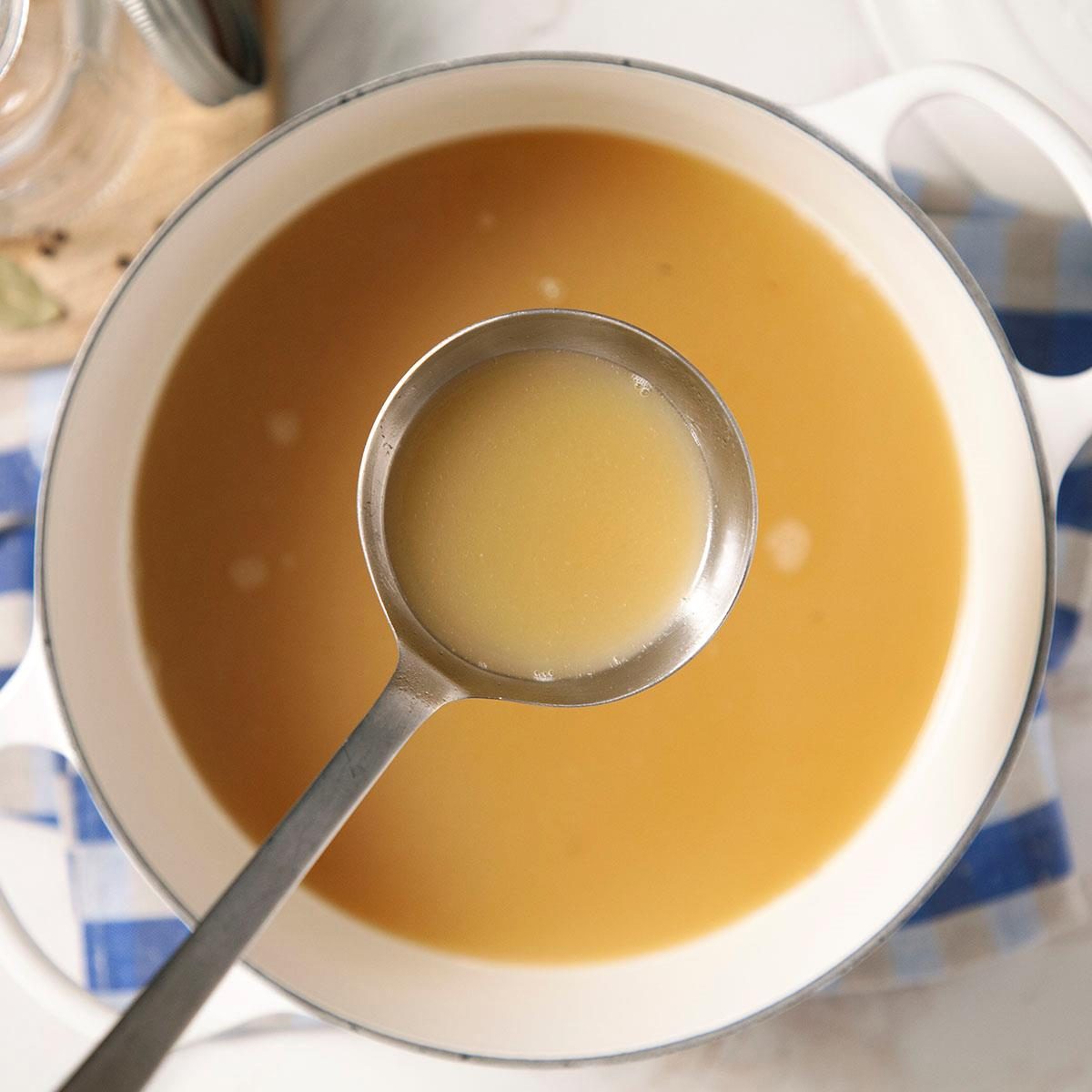Immune Support Recipes Featuring Chicken Broth as the Star Ingredient
The Ultimate Overview to Enjoying and making Organic Bone Broths at Home
Bone brew has obtained focus for its countless health and wellness advantages and culinary convenience. Crafting natural bone broth at home permits people to manage the high quality of components, guaranteeing a nourishing result. Recognizing the selection of bones, necessary flavor elements, and correct food preparation strategies is important. As the process unravels, one may wonder just how to raise their broth past the fundamentals and integrate it into everyday dishes for enhanced taste and nourishment.
Comprehending the Health Conveniences of Bone Broth
Bone broth has actually been a staple in numerous cuisines for centuries, its health and wellness benefits have gotten substantial focus in current years. Rich in collagen, amino acids, and minerals, bone brew is often promoted for its possible to sustain joint health and wellness, boost gut feature, and improve skin flexibility. The gelatin stemmed from cooked bones might aid digestion and aid seal the intestine cellular lining, possibly alleviating concerns like dripping digestive tract syndrome.Furthermore, the presence of nutrients such as glucosamine and chondroitin might contribute to lowered swelling and discomfort alleviation in joints. Furthermore, bone brew is hydrating and can act as a healthy base for soups and stews. Many supporters likewise declare that it increases the body immune system, thanks to its mineral account. Overall, the renewal of rate of interest in bone brew is linked to its viewed capability to advertise overall health and assistance numerous bodily features.
Picking the Right Bones for Optimum Flavor and Nutrition
What variables should one consider when choosing bones for brew preparation? The kind of bones made use of greatly influences both flavor and dietary worth. First, it is crucial to choose bones that consist of a mix of marrow bones, joint bones, and meaty bones. Marrow bones offer healthy and balanced fats and abundant flavors, while joint bones add collagen, boosting the brew's dietary profile.Additionally, sourcing bones from pasture-raised or grass-fed animals warranties greater high quality and even more nutrients, as these pets are generally much healthier. The quality of the bones is additionally vital; selecting bones from neighborhood butchers or farmers' markets can guarantee excellent flavor. Bone size matters too; larger bones release even more jelly, causing a richer brew. Considering the kind of animal-- hen, beef, or fish-- can influence the last taste, allowing for flexible brew choices tailored to specific preferences.
Essential Components for a Savory Bone Brew

Quality Bone Choice
The structure of a savory bone broth depends on the cautious selection of top quality bones. Sourcing organic, grass-fed or pasture-raised bones is necessary, as these choices are more probable to be without dangerous additives and offer exceptional nutrients. Ranges such as chicken, beef, or lamb bones each present distinct tastes and health benefits. Bone types, including marrow bones, knuckle bones, and oxtails, add jelly and collagen, boosting the brew's appearance. Picking bones with a mix of meat and connective cells can likewise add richness and depth. Additionally, choosing bones with noticeable marrow guarantees a nutrient-dense brew, raising the total high quality. Ultimately, spending time in top quality bone option prepares for a delicious and beneficial broth.
Fragrant Flavor Enhancers
Choosing high-quality bones establishes the stage for a healthy and rich bone brew, but it is the addition of fragrant flavor enhancers that absolutely elevates the dish. Active ingredients such as onions, garlic, and carrots not just impart sweet taste however additionally contribute depth to the brew. Fresh herbs like parsley, bay, and thyme leaves include a fragrant note, while seasonings such as black peppercorns and cloves present heat and complexity. Furthermore, including a dash of apple cider vinegar can help extract minerals from the bones, enriching the brew. These taste boosters produce an unified mix, changing a straightforward broth right into a tasty structure for stews, soups, or sauces, making it a functional element in any kind of culinary collection.
Step-by-Step Guide to Making Bone Brew in your home
Creating bone brew at home can be a gratifying culinary venture that improves both flavor and nourishment in various recipes. To start, one must choose high-quality bones, ideally from grass-fed or natural sources. Roasting the bones at 400 ° F for concerning thirty minutes can escalate the flavor. Next, move the roasted bones to a large pot or slow-moving cooker and cover them with cool water. Adding a splash of vinegar aids essence minerals from the bones.Include aromatic vegetables like onions, carrots, and celery for included depth, in addition to herbs and flavors as desired. Bring the mix to a boil, after that decrease to a simmer. It is important to let the broth simmer for a minimum of 12 hours, though longer is preferable for maximum richness. Strain the broth through a fine-mesh filter and store it in impermeable containers, prepared to raise dishes with its nourishing essence.
Tips for Improving Your Bone Broth Simmer
While simmering bone broth, preserving the appropriate temperature level and timing is necessary for accomplishing a rich and savory outcome. A gentle simmer, preferably between 190 ° F and 210 ° F, helps remove optimum nutrients and flavors without steaming, which can make the broth cloudy. It is advisable to monitor the pot carefully, readjusting the warmth as essential to keep this simmer.Timing is likewise crucial; a longer simmer, generally varying from 12 to 48 hours, enables much deeper flavor extraction and collagen launch. For poultry bones, a 12 to 24-hour simmer is adequate, while beef bones benefit from longer cooking times.Additionally, skimming off any type of foam or pollutants that climb to the surface area throughout the first few hours can boost the broth's clearness and preference. Ensuring the pot is covered during simmering aids to keep dampness and intensify the tastes, making for an extra rewarding end item.
Creative Ways to Utilize Bone Broth in Your Food preparation
Integrating bone broth into various dishes raises both flavor and nutritional value. Chefs and home chefs alike locate that utilizing bone brew as a base for soups and stews improves depth and richness, changing easy dishes into hearty meals. It can additionally be utilized in risottos, where the brew replaces water, permitting the grains to absorb its savory essence.Additionally, bone broth works More about the author as an excellent cooking fluid for grains like quinoa or rice, instilling them with nutrients and taste. For an added spin, it can be made use of in braising meats, resulting in tender, tasty outcomes. Also sauces take advantage of a dash of bone broth, enriching their preference profile.Moreover, bone brew can be integrated into smoothie mixes for an unanticipated health increase, giving protein and nutrients without jeopardizing taste. These creative applications showcase the versatility of bone broth in daily cooking, making it an indispensable kitchen area staple.
Storing and Protecting Your Homemade Bone Broth
Correct storage and conservation of homemade bone broth is important for keeping its flavor and dietary benefits. Freezing strategies and refrigeration ideal practices play an essential duty in extending the brew's rack life. Understanding these approaches can assist ensure that the broth remains scrumptious and safe for future usage.

Icing Up Strategies Described
Freezing methods are vital for efficiently storing and maintaining home made bone broth, guaranteeing its rich tastes and nutrients stay intact for future use. To ice up bone broth, it is recommended to allow it amazing entirely before moving it to storage space containers. Glass containers, silicone molds, or sturdy freezer bags are ideal choices. When using containers, leave room at the top for development during cold. Portioning the brew right into smaller amounts permits simple thawing and decreases waste. Label containers with the click to investigate date and materials for easy recognition. For peak high quality, take in the frozen brew within three to six months - Beef Broth. Defrosting can be done in the refrigerator or by utilizing a microwave, making certain that the broth is heated completely prior to intake
Refrigeration Best Practices
While many concentrate on cold as a method of preservation, refrigeration likewise plays a vital function in saving homemade bone broth effectively. As soon as cooled down, bone broth should be moved to closed containers, assuring minimal air exposure to avoid perishing. It is a good idea to cool broth within two hours of cooking to preserve its quality. Normally, homemade bone brew can be saved in the refrigerator for approximately 5 days. Identifying containers with dates can help track quality. For peak flavor and safety and security, brew needs to be reheated to a rolling boil before consumption. If longer storage is required, cold remains an excellent alternative, however proper refrigeration practices assure that bone brew stays scrumptious and nourishing for temporary use.
Often Asked Concerns
Can I Utilize Frozen Bones for Making Bone Broth?
The concern of using icy bones for bone broth arises regularly (Chicken Broth). Experts agree that frozen bones can be used effectively, but they need to be thawed prior to cooking to guarantee excellent taste and nutrient removal
How Much Time Can I Store Homemade Bone Broth?

Is It Safe to Reheat Bone Broth Multiple Times?
Reheating bone brew numerous times can present security issues - Bone Broth Delivery. Each reheating cycle increases the risk of microbial development. It is suggested to reheat just once and save any kind of leftovers immediately to guarantee safety and security and top quality
Can I Add Vegetables to the Brew for Flavor?
Adding vegetables to brew improves taste and page nutritional value. Usual selections consist of carrots, onions, and celery. The vegetables instill their significance into the brew, producing a richer and more tasty last item.
What's the Ideal Method to Defrost Icy Bone Broth?
To thaw frozen bone broth, one can position it in the refrigerator overnight, use a microwave on reduced heat, or submerge the sealed container in cozy water, making sure even thawing without jeopardizing taste or nutrients. It is crucial to pick bones that consist of a mix of marrow bones, joint bones, and meaty bones. Marrow bones give healthy fats and abundant flavors, while joint bones add collagen, improving the broth's nutritional profile.Additionally, sourcing bones from grass-fed or pasture-raised animals warranties higher top quality and more nutrients, as these pets are normally healthier. Bone kinds, consisting of marrow bones, knuckle bones, and oxtails, contribute gelatin and collagen, improving the brew's texture. Selecting premium bones sets the phase for a nourishing and rich bone brew, however it is the enhancement of aromatic taste enhancers that genuinely elevates the dish. Also sauces benefit from a dash of bone brew, enriching their preference profile.Moreover, bone brew can be incorporated into smoothie mixes for an unforeseen health increase, offering healthy protein and nutrients without jeopardizing taste.